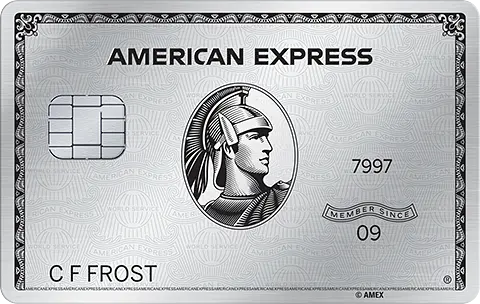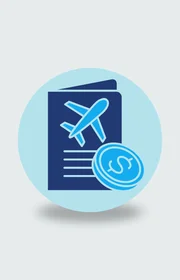We’ve all been there. You look down at your boarding pass and realize your next flight is in 30 minutes… from the other side of the airport. 🫠
Maybe you booked a short layover without realizing it. Or maybe a delay left you less wiggle room than planned. Either way, it’s not a great feeling.
Airlines often sell itineraries with connection times that meet the legal requirement, but in reality, they leave almost zero room for error. While the flight might work if everything goes perfectly, it can just as easily leave you stranded.
Let’s break down what minimum connection time (MCT) actually means, how it’s calculated, and what you should plan for so you’re not left sprinting through the airport.
What Are Minimum Connection Times?
Minimum connection time is the shortest layover an airline will allow between flights on a single itinerary. Airlines set these times themselves (not regulators), and their booking systems simply won’t sell you an itinerary that falls below their own rules.
Those rules take into account things like:
Airport layout and size
Whether the connection is domestic or international
Typical times for deplaning, boarding, baggage transfers, and so on
Required terminal changes, security, or customs
The thing is… the “legal” minimum doesn’t mean it’s realistic for you. Just because an airline says 35 minutes is enough doesn’t mean you can make it with a delayed inbound flight, a crowded security line, or an unexpected gate change.
How Are Minimum Connection Times Determined?
Standard MCTs are set through an industry standard. Basically, airport operators and airlines agree on some baseline values, and the International Air Transport Association (IATA) publishes them as “station standard” times.
Then airlines can file for exceptions (shorter or sometimes longer flights) for specific routes or partner connections. For example, KLM might secure a shorter MCT in Amsterdam if it operates both incoming and outgoing flights and controls the transfer flow.
So based on all of that, the MCT you see may have a lot going on behind the scenes. And if you booked that airline or its partners, they’re responsible (if you missed the connection), just like they’re responsible for your checked bags.
Recommended Minimum Connection Times (By Region)
Instead of playing games with your connection time, here are some realistic buffers based on airline data, IATA guidance, and our team's travel experience:
Airport (Hub) | Domestic → Domestic | Domestic → International (or Schengen → Non‑Schengen) | International → Domestic |
Atlanta (ATL) | 60 min | 90 to 120 min | 120 to 150 min |
Dallas/Fort Worth (DFW) | 60 min | 90 min | 120 to 150 min |
Denver (DEN) | 60 min | 120 min | 120 to 150 min |
Chicago O’Hare (ORD) | 75 min | 120 min | 135 to 150 min |
New York (JFK) | 60 to 75 min | 120 to 135 min | 150 to 180 min |
Newark (EWR) | 60 to 75 min | 120 min | 150 to 180 min |
Detroit (DTW) | 60 min | 90 to 120 min | 135 to 150 min |
Los Angeles (LAX) | 75 min | 120 to 150 min | 150 to 180+ min |
San Francisco (SFO) | 75 min | 120 min | 150 to 180 min |
Miami (MIA) | 75 min | 120 min | 150 to 180+ min |
Houston (IAH) | 60 to 75 min | 90 to 120 min | 135 to 150 min |
London Heathrow (LHR) | 90 min | 150 min | — |
Amsterdam Schiphol (AMS) | 75 min | 120 min | — |
Frankfurt (FRA) | 90 min | 135 min | — |
Paris (CDG) | 90 min | 150 min | — |
Singapore Changi (SIN) | 60 min | 90 min | — |
Tokyo Haneda (HND) | 60 min | 120 min | — |
Hong Kong (HKG) | 75 min | 120 min | — |
Bangkok (BKK) | 75 min | 135 min | — |
Experts recommend giving yourself at least 60 to 90 minutes for U.S. domestic connections and closer to two hours for international transitions.
JFK’s standard MCT for international‑to‑domestic is 120 to 135 minutes, but people often recommend padding to 2.5 to 3 hours if terminals change or immigration is involved — which we can confirm is helpful, based on our team’s experience.
International to Domestic in the U.S.
This one’s especially tricky. When you land in the U.S. from abroad, even if your final destination is another U.S. city, you’ll generally need to:
Go through immigration
Collect and re-check your baggage (even if it’s tagged through)
Go through TSA security again
And possibly change terminals
Cry in the bathroom really quick… wait, just me?
This is why even when the legal MCT is 90 minutes, it’s often safer to allow 2.5 to 3 hours. Airports like JFK, LAX, MIA, and SFO are especially known for long immigration lines and crazy terminals.
What To Do If You Miss Your Connection
Listen, it happens to the best of ‘em! Even the best-planned connection can fall apart due to delays, weather, or airline changes.
If it happens:
Check for alternative flights immediately via the airline’s app or elsewhere
Go straight to a gate agent to skip long service lines if possible
Use the airline’s rebooking tools if available
Be polite but persistent. Customer service agents are HUMAN and will respond better to respectful requests 😌
💡 Pro Tip: Consider downloading an app like Flighty, which will warn you ahead of time about tight connections, long walks to your gate, etc.
Which Credit Cards Can Save the Day
Many premium travel credit cards offer trip delay or missed connection coverage, meaning they’ll reimburse expenses like meals, hotels, or transportation if you’re stranded. But here’s how that coverage actually works:
You must pay for at least part of your airfare with the eligible card (either directly or via points with taxes and fees charged to the card)
The delay usually has to be six hours or more, or require an overnight stay
Reimbursement is per person, per ticket, and can include lodging, food, toiletries, and transportation to and from the airport
Most policies only apply to trips booked on a single itinerary. If you booked two separate tickets on different airlines, you may not be covered for missed connections between them (even if your card includes delay benefits)
Booking a tight connection knowingly won’t necessarily void your coverage, but cards may deny claims if the delay was caused by something within your control (like sleeping through your alarm, not leaving enough time, etc. 🫠)
Here are a few top cards that offer this coverage:
Chase Sapphire Reserve®: Up to $500 per ticket for delays over six hours or overnight
American Express Platinum Card®: Trip delay reimbursement of up to $500 for delays over six hours, up to two claims per year (enrollment required)
Capital One Venture X Rewards Credit Card: Up to $500 for covered delays over six hours
🤓 Another Pro Tip: Keep all receipts and file your claim within the required time frame. Even if your airline rebooks you, your card may cover the cost of your extra night’s stay or other reasonable expenses.
Bottom Line
A short layover might look tempting when you’re booking, but in reality, it’s one of the fastest ways to turn a smooth trip into a stressful travel day. Airlines and airports set minimum connection times based on what is technically feasible, under ideal conditions — not on what is realistic for most travelers.
If you’d rather avoid sprinting through the terminal, build in some extra buffer time, understand how these airline-specific connections could apply, and keep a trusty travel card on hand. Because while running through an airport might make for a good story later… it’s a lot better when it’s not your actual trip.
📚 Sources: Recommended connection times are based on a combination of our team’s own expertise and experience (having flown to hundreds of countries collectively), industry standards published by the International Air Transport Association (IATA), OAG’s Minimum Connection Times: An Insider’s Guide, and recent traveler reports and advice from The Washington Post and AirGuide. Exact airline‑ and airport‑specific MCTs may vary and are subject to change.











